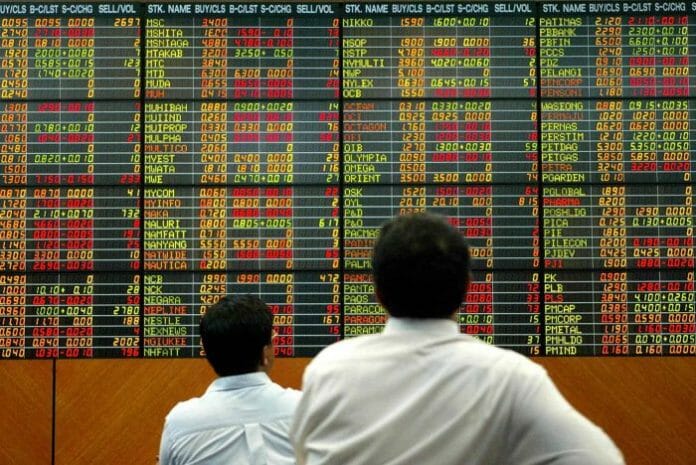Asian shares slid today to their lowest this year as worries over higher U.S interest rates for longer period gripped markets, while the yen wobbled near a one-year low, keeping traders on alert for a possible intervention.
MSCI’s broadest index of Asia-Pacific shares outside Japan fell 1.6 per cent to the lowest since November 28, 2022. Japan’s Nikkei fell 1.8 per cent, while Hong Kong’s Hang Seng Index sank 3 per cent. Chinese markets were closed for the week because of the Golden Week holiday.
Futures indicated European stocks were due to open lower, with the Eurostoxx 50 futures down 0.58 per cent, German DAX futures 0.60 per cent lower and FTSE futures down 0.31 per cent.
US Federal Reserve officials said monetary policy will need to stay restrictive for “some time” to bring inflation back down to the central bank’s 2 per cent target.
“I remain willing to support raising the federal funds rate at a future meeting if the incoming data indicates that progress on inflation has stalled or is too slow to bring inflation to 2 per cent in a timely way,” Fed Governor Michelle Bowman said yesterday in prepared remarks to a banking conference.
Still, the hawkish rhetoric from the Fed officials comes as an ongoing debate over another possible rate hike this year rages on.
Fed funds futures traders are pricing in a 26 per cent chance of a rate hike in November, and a 45 per cent likelihood of an increase by December, according to the CME Group’s FedWatch Tool.
“We continue on this higher for longer narrative,” Rob Carnell, Asia-Pacific head of research at ING. “Higher bond yields, stronger dollar for the moment is the dominant story.”
Australia’s S&P/ASX 200 index was 1.3 per cent lower, while the Australian dollar sank 0.77 per cent to US$0.631 after the Reserve Bank of Australia held interest rates steady today for a fourth month and showed no urgency to hike again.
The central bank, however, repeated a warning that further tightening might be needed to bring inflation to heel in a “reasonable timeframe”.
Yen vigil
In the foreign exchange market, the focus remains on the Japanese yen as the currency inches closer to the 150 per dollar mark — a level traders have speculated could lead to intervention from the authorities.
The yen was last at 149.89 per dollar in Asian hours, having plumbed a fresh near 12-month low of 149.935 during the session.
Last September, Japanese authorities conducted their first intervention in 24 years, when the yen weakened past 145 per dollar, and speculation has mounted that they will step in again with the yen under constant pressure due to a yawning yield gap against the dollar.
Japanese Finance Minister Shunichi Suzuki said today authorities were watching the currency market closely and stood ready to respond, repeating a warning against speculative moves that did not reflect economic fundamentals.
“(It) feels like people have accepted that there is perhaps some genuine intervention coming if they move much higher,” said ING’s Carnell. “It (the dollar-yen pair) is still nonetheless drifting upwards. Just at a very, very glacial pace.”
The dollar index, which measures the U.S currency against six major rivals, rose 0.168 per cent to scale a fresh 10-month peak.
The yield on 10-year Treasury notes was up 0.2 basis points to 4.685 per cent after touching 4.703 per cent, the highest since October 2007, in the Monday session. The yields got a boost after an agreement to avert a partial US government shutdown reduced demand for the debt before key jobs data this week.
US crude fell 0.84 per cent to US$88.07 per barrel and Brent was at US$89.76, down 1.05 per cent on the day, according to Reuters.
Meanwhile, spot gold dropped 0.5 per cent to US$1,818.10 an ounce. US gold futures fell 0.56 per cent to US$1,819.80 an ounce.









